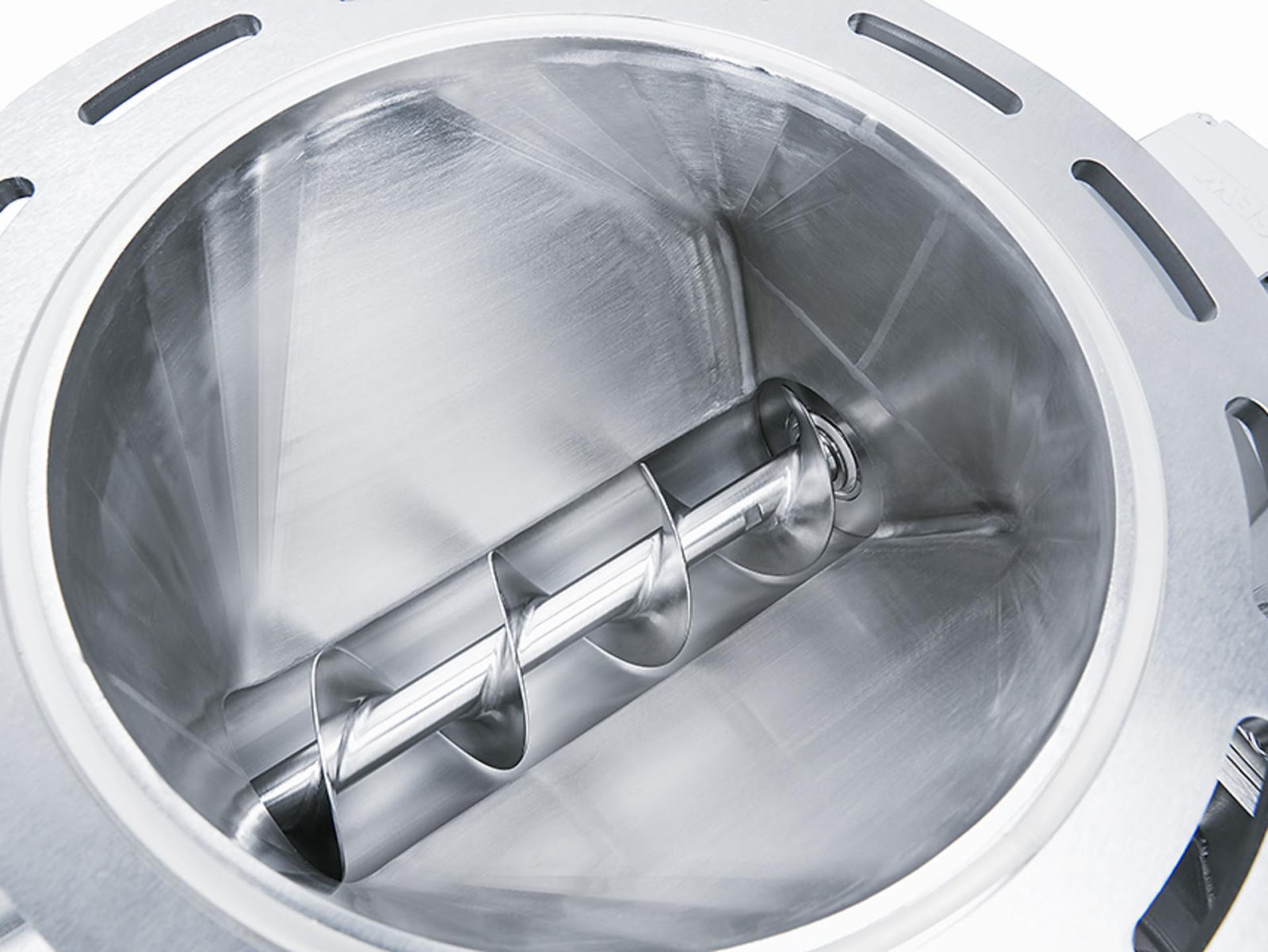
Dosing is all about accuracy. Companies can lose hundreds of thousands of dollars when inaccurately measuring ingredients that are put into a product. Even worse, consumer safety could be jeopardized when too much of a certain additive is placed somewhere in a process.In applications where weighing accuracy is important, a dosing screw can become a necessary choice over a standard feeding screw. Not all screws are built the same. So, what makes a dosing screw a dosing screw? The answer is in the design: Dosing screws are made in a way that accommodates accurate feeding, weighing and dosing of powders or granular materials. On the other hand, a raw feed screw’s only purpose is to move product (usually from one container into a second location).
There are a few aspects of a dosing screw’s design that accomplishes this and sets it apart from other feed screws. The diameter of the screw flights and the very tight tolerances inside the screw housing ensure accurate dosing. The fast-acting shutoff valve (or cut-off device) at the end of a dosing screw ensures accurate weighments that are not possible with a standard feed screw. A variable-speed motor, or VFD (variable-frequency drive), makes the functions of a dosing screw possible.
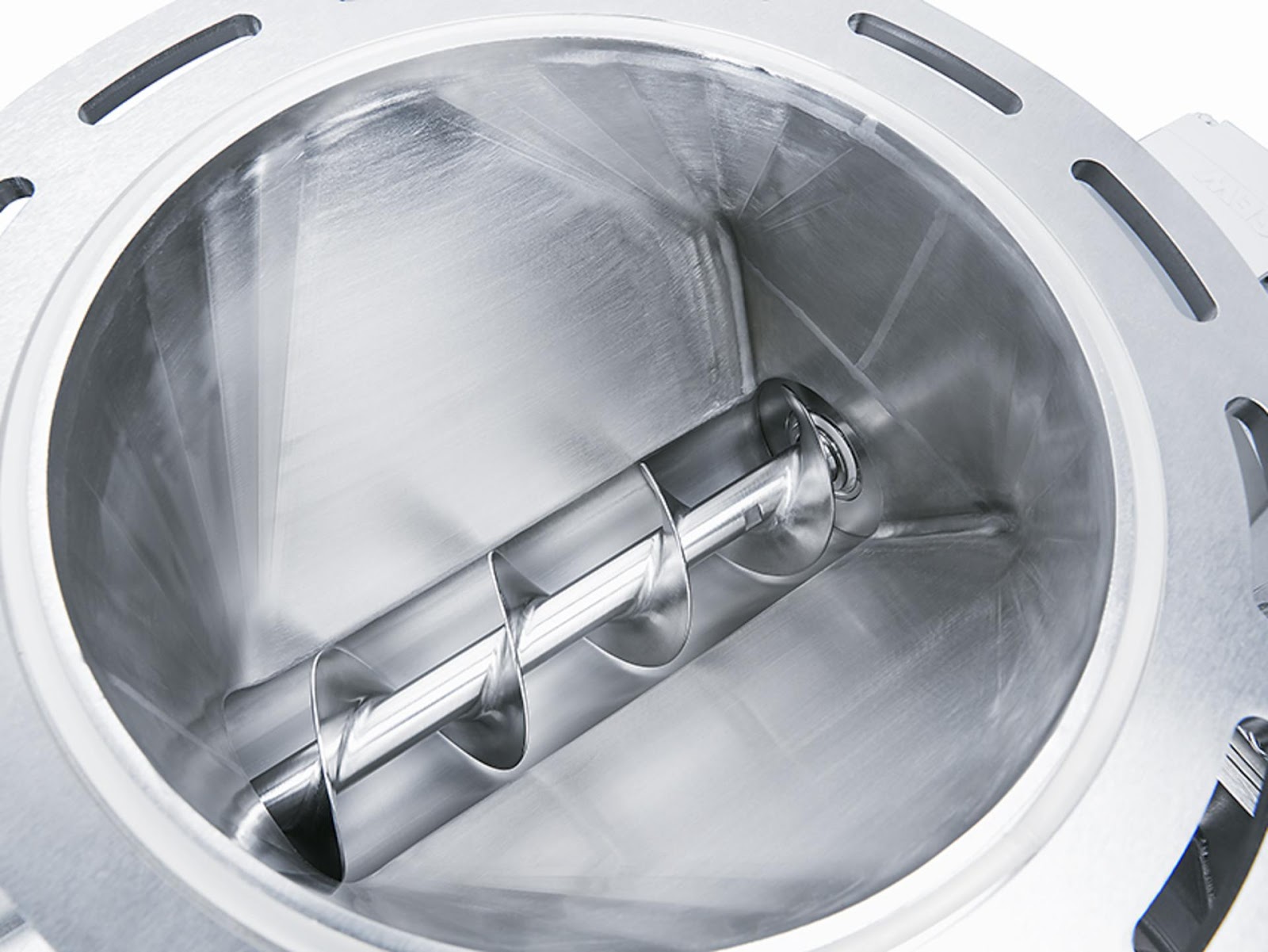
The integrated dosing screw of an AZO DA model Screener.
The engineering behind the entire design of a dosing screw accommodates the functions that it can perform in a process. Let’s observe specifically how the features that distinguish dosing screws function to ensure weighment accuracy:
The diameter of the screw flights ensures accurate measurements
It’s hard to picture something so small as the tight tolerances of a screw housing being so critical in cutting costs and avoiding serious implications associated with inaccurate dosing. Still, the screw flights of a high-quality dosing screw avoid scraping or grinding against the inside wall. Simultaneously these flights don't leave much of a gap between the piping and the flights either. In this way, the diameter of the flights makes for extremely accurate movements of powders and other materials.
As these flights operate as close to the feeder housing as possible, product is sealed within the housing. Essentially, precise feeding is ensured by a quality dosing feeder’s auger design and diameter. When weighing accuracy is critical, the best and most consistent product possible can ultimately be attained by details such as the diameter and pitch of screw flights.
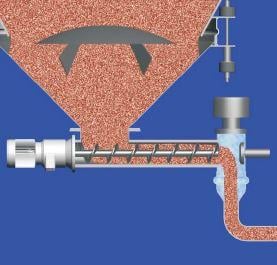
The precise fine stream of a dosing screw is made possible by key aspects of the screw’s design
A dosing screw’s cut-off device prevents waste
As a dosing screw’s motor is spinning a certain speed and a VFD slows that speed down for precise measurement, what will stop excess material from continuing to dribble from the screw outlet? How do you achieve an even more accurate weighment as the excess product continues its path?
Pneumatically operated shutoff valves (or “cut-off devices”) provide sharp cut-off to prevent extra material from being conveyed after the motor energy has stopped. These specialized and finely engineered devices resemble small piston-type devices that block the end of a screw so that material flow is instantly stopped. Less product waste is accumulated as a result, and costs can decrease as material is handled over time.
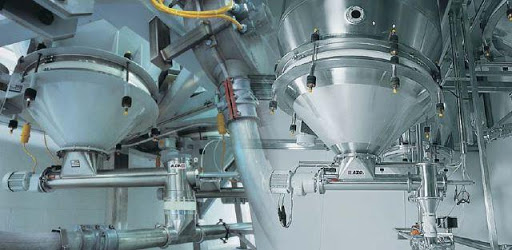
To prevent trickling from the screw outlet after metering, the outlet of a dosing screw is pneumatically closed by a shutoff valve, or “cut-off device.”
Cut-off devices are precision fabricated, where standard screws do not utilize them. Even some dosing screws do not include these arrangements, but higher-quality dosing screws that are equipped with shutoff valves more accurately control how much product goes into the scale.
A dosing screw’s functions are made possible by a VFD
Essentially, dosing screws meter how much of any given material is moving to another part of the process — be it powder or other material. As a dosing screw turns, it meters product into a drop tube or conveying line. While the line is sending product over to the scale, the load cells on the scale increase in value.
A VFD makes it possible for a dosing screw to gradually turn slower as it feeds a specifically targeted amount of material. This offers better control of fine dosing and pre-act to achieve accurate final amounts in the scale. Technically, a VFD can also control the speed at which a standard screw can turn as well. Still, when utilized in conjunction with a dosing screw, precise product weighments are ensured. Essentially, VFDs allow screws to run both fast feed and then slow speed to achieve fine dosing.
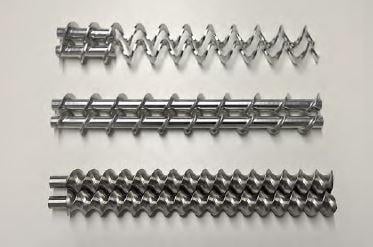
The screw variants available for double screw dosing systems in an AZODOS. These include spiral (top), full-flight (middle) and double concave screws (bottom).
AZO’s screws are German-engineered with just the right tolerances for handling products efficiently. If you have any questions about our precision-fabricated dosing screws or any piece of our robust equipment (from our screeners to our big bag unloaders) don’t hesitate to contact our dedicated sales associates.

